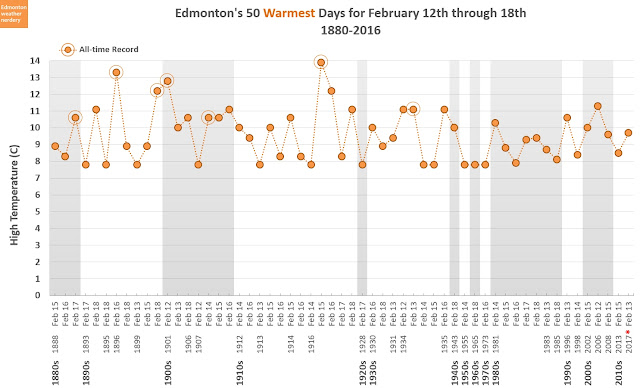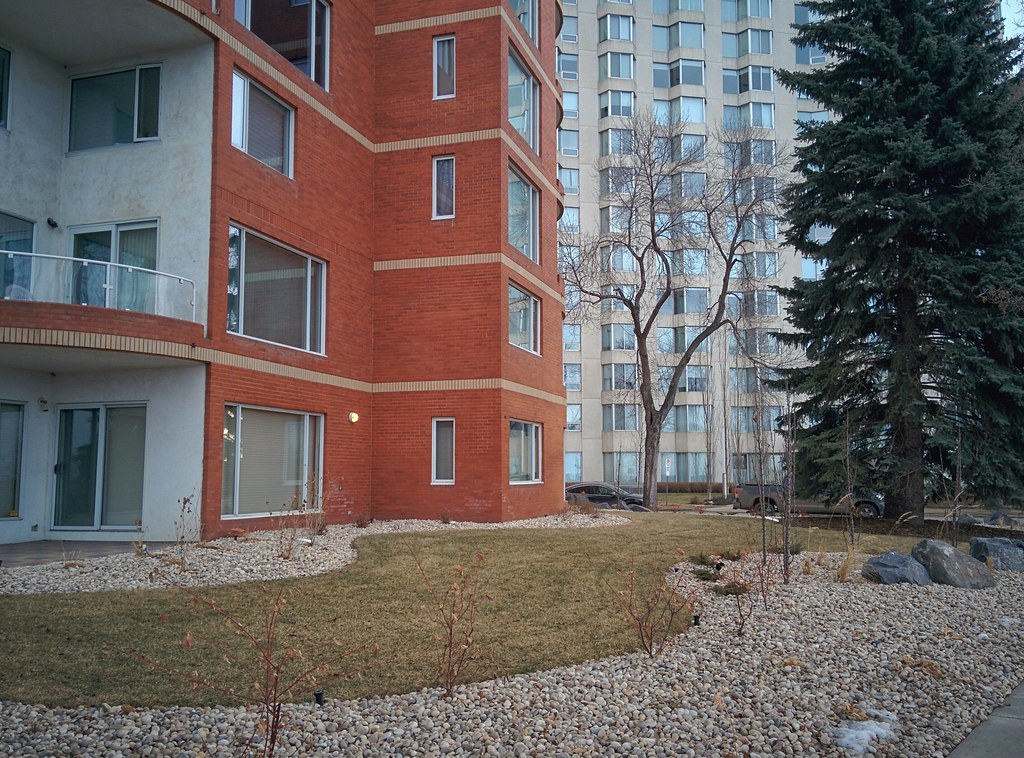Things have cooled off a bit recently, which almost makes it easy to forget just how warm things were during the middle of the month. We broke one all-time record on the 15th, at 16.4°C. That was the second warmest February day ever recorded in Edmonton, after February 27, 1889 at 16.7°C, and ahead of February 26, 2016 in third place at 15.3°C. That warmspell also broke three other recent records.
Before that though, we started the month with a pretty decent coldsnap. And to close off the month we settled in around the now-disappointingly-chilly average.
Looking at the last two months, the temperatures have only been slowly creeping up since New Year's. And that goes back to the idea that when our temperatures bottom-out for the winter, they hang out there for a long time. But as we head into March things should start to warm up faster.
Looking at February as a whole, we had 3 days above 10°C, which is more than any year since 1998. The last time a February had that many warm days was back in 1992, with 5. But it's actually not all that uncommon an occurrence - February 1889 recorded 6 days above 10°C.
For days above 0°C we only had 11, which is a bit on the low side. It's nowhere near as low as 2014 which only had 3, and it matches 2015, but 9 -of-the-last-19 February's had between 15 and 20 days above freezing.
February Low Temperatures
The low temperatures are a pretty similar story, with 3 recent records during the warmspell, along with a few other very warm days. And the early coldsnap had two recent coldest days.
This February had 4 nights that stayed above freezing, which is more than any of the other years since 1998.
For the colder nights, with 5 below -20°C and 2 below -25°C, that put this February around the middle of the pack.
Snowdepth
We've talked about snowdepth a lot in the past few weeks (Part 1, and Part 2 - the big melt) and on February 22 the Edmonton International officially dropped to 1cm of snow on the ground. It stayed there for a few days before we got some new snow on the weekend.
For my own reference as much as anything, this is what the downtown looked like while that airport had 1cm of snowdepth:
In the actual downtown it was tough to find any snow, but in big open areas like the golfcourse the snow was getting ready leave, but it hadn't quite stepped out the door.
As of February 28 the International is sitting at 3cm of snow on the ground, which puts it in the second-lowest spot ever recorded at the airport, and just a bit below last year and 2006. Although the winter certainly isn't over yet.
Snowfall
In terms of total snowfall for the month, at 9cm we were a little bit below the average. That makes February the least-snowy month this winter so far, which is pretty typically. In March things usually bounce back up, so we'll have to see what this spring has in store.
March Temperatures
As we move into March we can expect to see a lot more warmer days. The average High hits 0°C around the 9th of the month, and on-average we get 19 days above freezing.
March is not without deepfreezes though, which show up as the blocks of dark blue. We had some in 2014, 2013, 2011, 2009, and etc. 9-of-the-last-19 Marches have had at least one low below -20°C, and 17 have had lows below -15°C.
And this month we'll take a look at the topographical map again:
This shows the daily temperatures for January, February and March for the last 20 years.
Right now it still doesn't look like much, because even in March the temperatures don't usually break the 5-10°C range. But we do see a lot fewer blue canyons in March than we did in January. And once we move into April some warmer colours will start to appear.









































